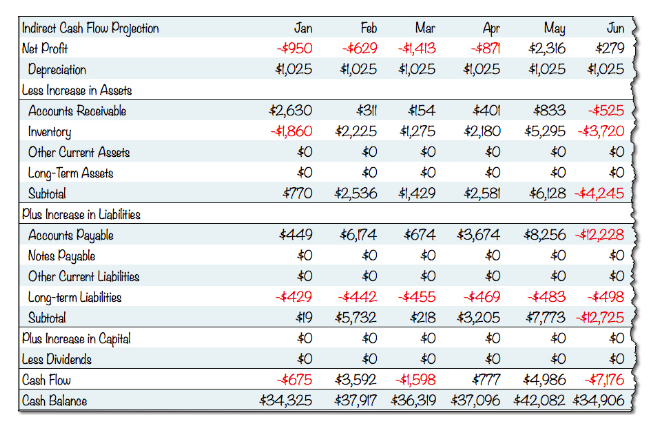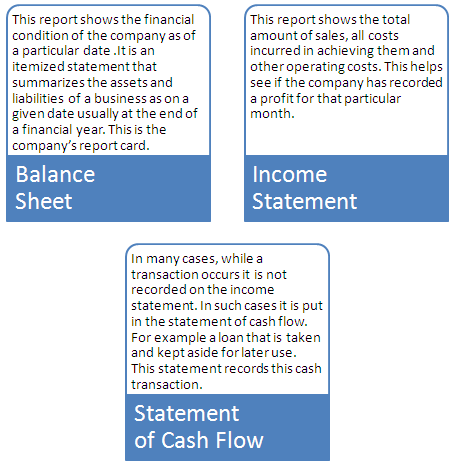The direct and the indirect method for the statement of cash flows

Essentially, the direct method sorts all of a company’s transactions and summarizes them into categories akin to taking a bank statement and sorting out checks, type of bill paid and deposits by source of inflow. For example, under operating activities, the direct method itemizes cash collected from customers, a cash inflow, and lists cash outflows such as rent paid as negative numbers to derive cash from operations.
Under the direct method, the only section of the statement of cash flows that will differ in the presentation is the cash flow from the operations section. The direct method lists the cash receipts and cash payments made during the accounting period. In contrast, under the indirect method, cash flow from operating activities is calculated by first taking the net income from a company’s income statement.
Revenue cash inflows and expense cash outflows are adjusted by multiplying the cash flow by (1 – tax rate). Although depreciation expense is not a cash outflow, it provides tax savings. The tax savings is calculated by multiplying depreciation expense by the tax rate. Once these adjustments are made, we can calculate the NPV and IRR. The direct method of cash flow is prepared using the direct transaction amounts that affect changes to the business’ cash account.
Depreciation is found on the income statement, balance sheet, and cash flow statement. It can thus have a big impact on a company’s financial performance overall. The direct method is one way for a company to prepare its cash flow statement for presentation to shareholders. Both U.S. generally accepted accounting principles (GAAP) and International Accounting Standards (IAS) recommend companies present operating cash flows using the direct method format. In addition, the direct method is straightforward and easier to understand.
How do you calculate direct cash flow?
The direct method for calculating this flow involves deducting from cash sales only those operating expenses that consumed cash. In this method, each item on an income statement is converted directly to a cash basis, and each cash effect is directly reported.
Cash flow statement direct method
The direct method is one of two accounting treatments used to generate a cash flow statement. The statement of cash flows direct method uses actual cash inflows and outflows from the company’s operations, instead of modifying the operating section from accrual accounting to a cash basis. Accrual accounting recognizes revenue when it is earned versus when the payment is received from a customer. The use of depreciation can reduce taxes that can ultimately help to increase net income.
Under the indirect method, the company starts with net income as reported on the income statement and adjusts net income on an accrual basis rather than cash basis. For instance, since depreciation is a noncash expense, the indirect method adds the amount to net income. An increase in accounts receivable is a use of cash because, essentially, the company is providing a good to a client on credit. Depreciation is an accounting method for allocating the cost of a tangible asset over time. Companies must be careful in choosing appropriate depreciation methodologies that will accurately represent the asset’s value and expense recognition.
Therefore, the time may be ripe for financial statement preparers to reevaluate their choice of method and reconsider the advantages and utility of the direct method. The direct method details where cash comes from and where it goes. In contrast, the indirect method starts with net income (for-profit entities) or the change in net assets (NFP entities), adds back non-cash expenses, removes gains and losses, and adjusts for the changes in current asset and current liability accounts.
Corporate Cash Flow: Understanding the Essentials
Accrual accounting records revenues and expenses when they occur regardless of when cash changes hands. For example, in accrual accounting, a company records a sale even if the customer has yet to pay his invoice.
Advantages and Disadvantages of the Direct Method
- The direct method lists the cash receipts and cash payments made during the accounting period.
- Under the direct method, the only section of the statement of cash flows that will differ in the presentation is the cash flow from the operations section.
If the organization has individual receivable and payable accounts for each of those lines, preparation of the operating activity section using the direct method becomes as easy as using the indirect method. Exhibit 5 shows a trial balance modified for these delineations. Exhibit 6 shows what the cash flows from operating activities would look like. Generating the amounts can be done using a simple spreadsheet; the amount from the statement of activities is adjusted by the change in the related receivable or payable.
The investing and financing sections of the statement of cash flows are prepared in the same way for both the indirect and direct methods. The indirect method for calculating cash flow from operations uses accrual accounting information, and it always begins with the net income from the income statement. The net income is then adjusted for changes in the asset and liability accounts on the balance sheet by adding to or subtracting from net income to derive the cash flow from operations. The three main financial statements are the balance sheet, income statement, and cash flow statement.

What is direct method in cash flow?
The direct method is one of two accounting treatments used to generate a cash flow statement. The statement of cash flows direct method uses actual cash inflows and outflows from the company’s operations, instead of modifying the operating section from accrual accounting to a cash basis.
First, the indirect method is required and the direct method is optional. Third, unlike the direct method, the indirect method can be prepared from virtually any standard chart of accounts. In contrast, the information required to use the direct method may not be readily available and may be tedious and difficult to develop. As if to highlight this, most accounting software only uses the indirect method to produce a statement of cash flows. Now that FASB has removed the requirement to show both methods when using the direct method, the only impediment is the informational requirement.
Net income is then used as a starting point in calculating a company’s operating cash flow. Operating cash flow starts with net income, then adds depreciation/amortization, net change in operating working capital, and other operating cash flow adjustments. The result is a higher amount of cash on the cash flow statement because depreciation is added back into the operating cash flow. Companies that pay income taxes must consider the impact income taxes have on cash flows for long-term investments, and make the necessary adjustments. Investment and working capital cash flows are not adjusted because these cash flows do not affect taxable income.
The cash flow statement is divided into three categories—cash flow from operating, cash flow from financing, and cash flow from investing activities. The cash flow statement can be prepared using either the direct or indirect method. The cash flow from financing and investing activities’ sections will be identical under both the indirect and direct method.
This added task makes the direct method unpopular among companies. It essentially presents a reconciliation of accrual accounting net income to cash from operating activities.
However, theFinancial Accounting Standards Board (FASB) prefers companies use the direct method as it offers a clearer picture of cash flows in and out of a business. However, if the direct method is used, it is still recommended to do a reconciliation of the cash flow statement to the balance sheet.
Understanding the Direct Method
Because a company’s income statement is prepared on an accrual basis, revenue is only recognized when it is earned and not when it is received. The indirect method also makes adjustments to add back non-operating activities that do not affect a company’s operating cash flow. The reconciliation report is used to check the accuracy of the operating activities, and it is similar to the indirect report. The reconciliation report begins by listing the net income and adjusting it for non-cash transactions and changes in the balance sheet accounts.
While the net cash provided or used by operating activities is the same with either method, the direct method directly provides the information users hope to ascertain from the statement. Furthermore, with a comparative balance sheet/statement of position and income statement/statement of activity, users can easily compute the same cash flows from operating activities using the indirect method, and thus the indirect method adds no information. Finally, the investing activity and financing activity sections are prepared using the direct method, so it makes intuitive sense that the operating activity section should be prepared on the same basis. Under the direct method, the cash flow from operating activities is presented as actual cash inflows and outflows on a cash basis, without starting from net income on an accrued basis.